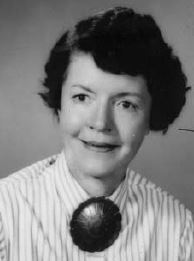Marjorie F. Lambert facts for kids
Marjorie Ferguson Lambert (1908–2006) was an American anthropologist and archaeologist. She mostly studied the cultures of Native American and Hispanic peoples in the American Southwest. Her most famous archaeological dig was at a place called Paa-ko, located in the Galisteo Basin.
Marjorie worked as a curator at the Museum of New Mexico from 1937 to 1969. She wrote many articles about the cultures of the Puebloan peoples. People admired her work for its careful details and her respect for different cultures. The Society for American Archaeology and the New Mexico Office of Cultural Affairs recognized her important contributions.
Contents
Early Life and Learning
Marjorie Elizabeth Ferguson was born on June 13, 1908, in Colorado Springs, Colorado. She became interested in archaeology when she was in high school. However, she did not think of it as a job at first.
Later, she heard lectures by famous archaeologists Edgar Lee Hewett and Sylvanus Morley. They helped her realize that to understand people, you need to learn about the past.
College and Early Studies
Marjorie went to Colorado College from 1926 to 1930. She earned a bachelor's degree in sociology. After that, she received a special research and teaching opportunity. This was at the University of New Mexico, starting in the summer of 1930.
At that time, women were often not taught how to dig at archaeological sites. This was to discourage them from becoming archaeologists. Marjorie faced challenges because she was a woman in a field mostly run by men. In 1931, she finished her master's degree. Her main project was about the culture of the Sandia Pueblo people.
Archaeology Career
In 1932, Marjorie married George Tichy. They were married for eighteen years, even though they lived together for less than a year. That same year, she started teaching at the University of New Mexico. She also worked at the Maxwell Museum.
Leading Digs and Discoveries
Marjorie taught anthropology and led archaeological field studies for the university. From 1931 to 1936, she supervised digs at several sites. These included Puaray, Kuaua, and Giusewa. She became known for her very careful and organized way of digging.
In 1935, she started working at the Paa-ko site. This site is the one most connected to her work. She took over the project from two male colleagues in 1936. She successfully finished the dig, even though some people thought workers might not want to work for a woman.
Museum Work and New Roles
In 1937, Edgar Lee Hewett retired from the University of New Mexico. He then hired Marjorie as the Curator of Archeology at the Museum of New Mexico. This museum was part of the School of American Archaeology in Santa Fe.
This was one of the first times a woman held such an important curatorial job in the United States. Hewett also hired Bertha P. Dutton as the ethnology curator.
Understanding Ancient Cultures
During this time, Marjorie continued to excavate sites like Paa-ko, Puaray, and Kuaua. She wrote four reports about her research at Paa-ko. However, her museum work kept her busy. She could not finish the final report on the site until 1954.
Marjorie was very interested in learning about the cultural history of the different Puebloan peoples. She helped lead the way in making archaeology more respectful of cultures. She often talked with tribal elders before creating museum displays.
She became an expert at dating ancient objects. She used different methods, like studying pottery, tree rings, and rocks. People from different tribes would even bring objects to her to identify.
Community Involvement and Later Work
Starting in 1938, Marjorie served as a judge for Pueblo pottery at the Santa Fe Indian Market. She also organized talks and activities for the Archaeological Society of New Mexico. She worked as the unofficial secretary for this group from 1943 to 1956, even though she was not paid.
In 1944, she began working on the site of Juan de Oñate's old capital, the Mission San Gabriel. She used both archaeological and historical methods for this project. In 1946 and 1947, she excavated sites in Mexico. However, her fieldwork was limited because of her busy museum duties.
In 1950, Marjorie married Everett Vey "Jack" Lambert. One of her last excavations was at a cave site in Hidalgo County, New Mexico in 1960.
Focus on Education and Preservation
After the Hidalgo County excavation, Marjorie Lambert focused more on teaching and saving cultural heritage. She published almost 200 papers during her career. She retired in 1969.
That same year, she started working on the Board of Managers at the School of American Research. In the 1970s, she helped plan and develop a museum at Picuris Pueblo. This was a special project. It was the first time that archaeological finds found a permanent home within their own community.
Marjorie was recognized for her vast knowledge and technical skills during her lifetime. In 1985, she received an award for her Outstanding Contributions to American Archeology. This was given by the Society for American Archaeology for its 50th Anniversary. In 1988, she received the New Mexico Heritage Preservation Award. That same year, she and her husband were named Santa Fe Living Treasures.
Marjorie Lambert passed away on December 16, 2006, in Santa Fe, New Mexico.


